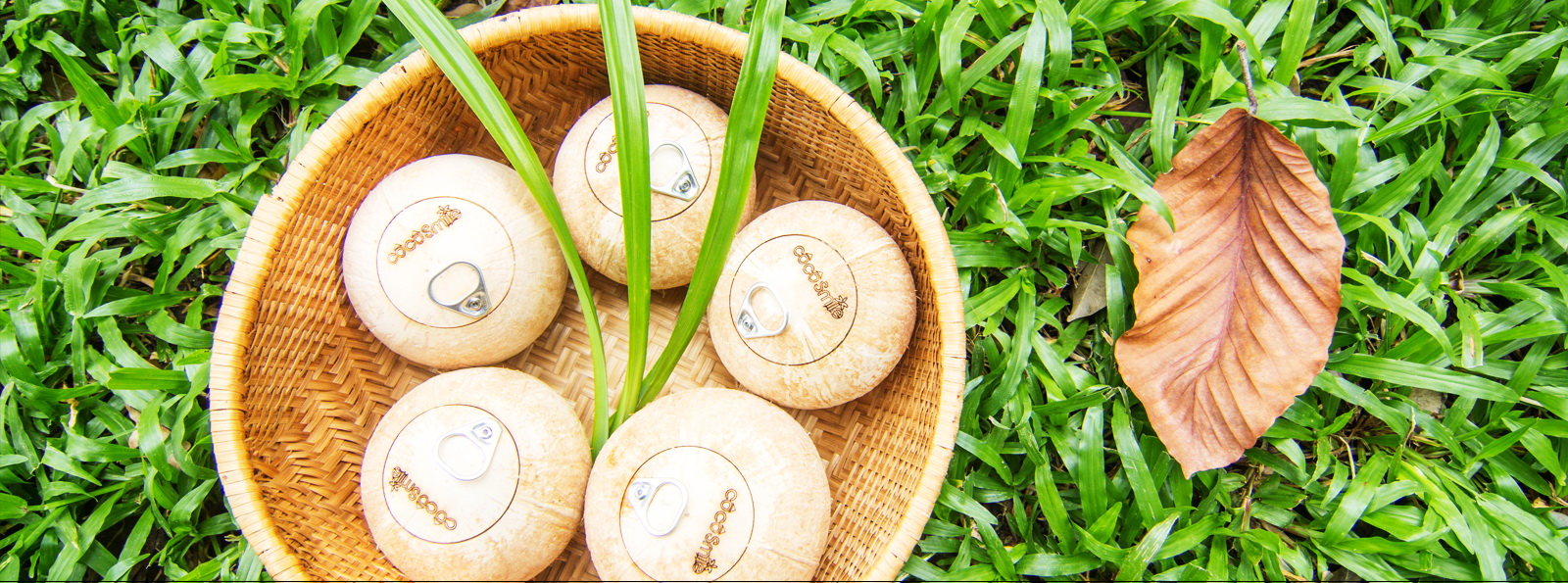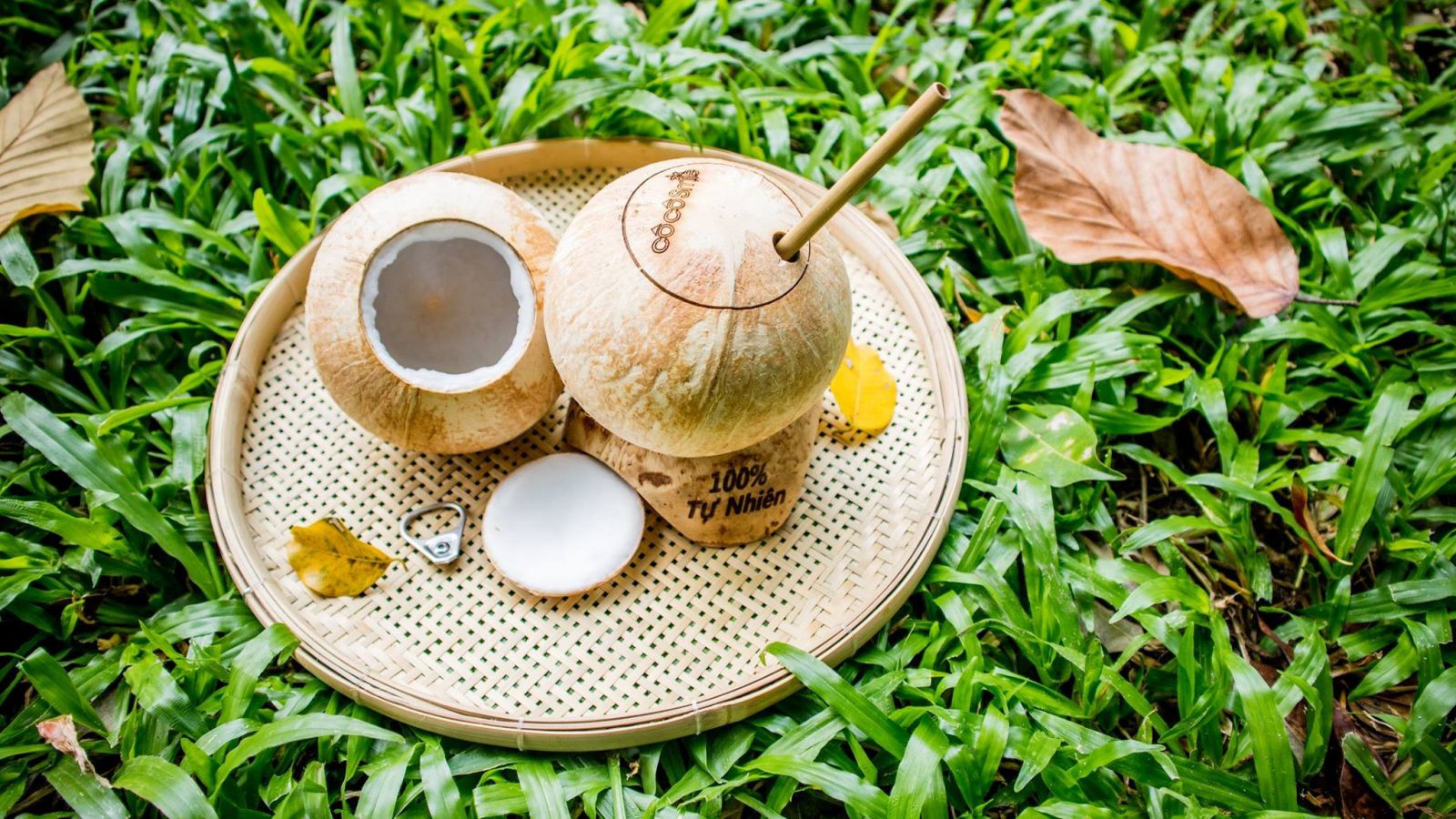The area of "coconut trees" of Vietnam ranks 7th among 93 coconut-growing countries in the world. According to the International Coconut Community (ICC), Vietnam coconut has the highest yield and quality in the world.
The whole country has 175,000 hectares of coconuts
In Vietnam, coconut is ranked fourth among perennial industrial crops with a large planting area, after rubber, pepper, and cashew. Currently, the country's coconut area reaches about 175,000 hectares, concentrated in the Central Coast provinces and the Mekong Delta.

Enhancing the value chain, aiming to increase the income of coconut farmers in the context of climate change adaptation.
In which, the Mekong Delta accounts for nearly 80% of the country's coconut area with an area of about 130,000 hectares. The provinces with large coconut growing areas are: Ben Tre (over 72,000 ha), Tra Vinh (nearly 20,000 ha), Tien Giang (over 14,000 ha), Vinh Long (over 7,000 ha). Since then, coconut has been identified as an important crop providing raw materials for many industries.
In Ben Tre, there are nearly 200,000 households growing coconuts. Coconut production is still small and not concentrated. However, coconut is still the main income tree in many regions.
According to research by the Research Institute of Oil and Oil Trees, in coconut growing areas in Ben Tre, Tra Vinh, income from coconut trees accounts for 50% of household income.
Data from Vietnam Customs shows that the coconut export value in September 2019 reached about 12.4 million USD, the 9-month coconut export value reached about 109.1 million USD, down 29.8% over the same period last year. 2018. Some traditional markets have been in decline.
In which, China is the leading market for importing Vietnamese coconut with 30.4% market share reaching 33.2 million USD, down 50% compared to the same period in 2018. Thailand decreased by 16.1%, Egypt decreased by 16.1%. 28.7%... However, some other markets increased sharply such as Qatar up 578%, Spain up 93.4%, Australia up 29.7%, Korea up 28%.
Upgrading the value chain
According to the evaluation of the Southern Fruit Institute, coconut trees are in the group of crops with good tolerance to salinity, with concentrations from 5-6 parts per thousand. In addition, coconut trees also tolerate waterlogging and absorb a significant amount of CO2. This is one of the favorable factors for the sustainable development of coconut trees in the current climate change conditions.

Coconut products have a lot of potential for development in the trend of green consumption.
However, according to the Southern Plant Protection Center, in the context of climate change, sea level rise, many types of pests will appear. Especially the coconut beetle.
Currently, biological measures such as breeding pincers, parasitic wasps... are biological solutions of top concern. Currently, the Center has built breeding models of the above natural enemies in the provinces of Ben Tre, Tra Vinh, Vinh Long, and Tien Giang.
According to experts, coconut growing provinces need to take advantage of coconut trees to effectively exploit this crop. Le Viet Nga, Deputy Director of the Domestic Market Department under the Ministry of Industry and Trade, said: Currently, the Government has many policies and executive documents to reduce and replace plastic products used. once, promote green consumption and work towards building a green economy. In particular, the Prime Minister emphasized, striving to 2025 Vietnam does not use single-use plastic.
This creates a great advantage for coconut trees, coconut products such as chopsticks, spoons, household appliances, food processing, cosmetics... have advantages and potential for development. Moreover, in the green economy, the development of organic agriculture is a matter of great concern and direction. Coconut peat is a very good source of organic fertilizer processing materials.
According to Mr. Le Thanh Tung, Deputy Director of the Department of Crop Production (Ministry of Agriculture and Rural Development), coconut is one of the crops that the Government and the Ministry of Agriculture and Rural Development are interested in planning.
In Decision No. 124/QD-TTg dated 2/2/2012 on the master plan for agricultural production development to 2020, vision to 2030, the coconut area in Vietnam is 140,000 ha. The main production areas are the Mekong Delta, the Central Highlands, the South Central Coast, and the Southeast.
On April 2, 2014, the Ministry of Agriculture and Rural Development also issued Decision 639 on agricultural and rural planning in the Mekong Delta until 2020 with a vision to 2030.
In which, the coconut area is 123.3 thousand hectares and the output reaches 1 million tons. The agricultural sector will focus on renovating old mixed gardens and coconut gardens, planting trees to replace them with new varieties with higher yields, replicating intercropping models (cocoa, aquaculture, chicken raising), applying suitable intensification models
Strengthening the link between coconut consumption in order to improve the value chain of coconut trees.
In Ben Tre, after the direction of Permanent Deputy Prime Minister Truong Hoa Binh on sustainable development of coconut trees, improving income for coconut growers, the People's Committee of Ben Tre province set out a group of 6 tasks for the departments, departments and branches of the province actively implement. In which, developing the coconut value chain through the development of cooperatives and cooperatives. This is the basis for businesses to invest in building raw material areas, linking consumption, improving the coconut value chain and developing exports.




